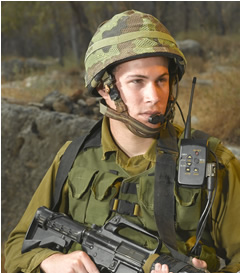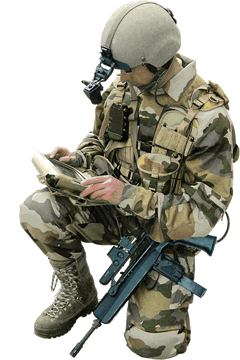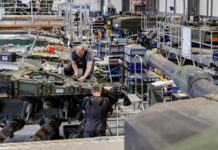Traditionally infantry operated in small units such as squads, companies and platoons. While ancient armies used larger formations to aggregate firepower, enhanced communications and devastating firepower of the modern age empower the infantry leader to use different tactics. In practical terms, allocation of communications determines the smallest size of combat element, which can be controlled as a coherent unit.
In most regular armies, the squad is the smallest tactical level unit. Below the squad, only better equipped Special Forces operate in smaller teams. In most recent conflicts, infantry formations were controlled by voice and visual hand signals, shouts or whispers. Lack of communications has sofar limited dismounted infantry operations due to command and control limitations. As they dismount their Armored Personnel Carriers, individual soldiers and sub-squad teams could only disperse within shouting range from each other, to deploy firepower in mutual support, coordinate their movement and prevent fratricide.
 Intra-squad voice and data communications significantly improve infantry operations. For the first time, independent sub-squad elements can be employed and coordinate their activity and firepower. Mutual fire support between and within squads can be controlled. Improved situational awareness and reporting provides better real-time intelligence and information gathered in real time. Modern intra-squad specialized Personal Role Radios (PRR) offer effective communications within the squad and between combat teams, enabling effective dismounted infantry operations at a level previously reserved only for Special Forces.
Intra-squad voice and data communications significantly improve infantry operations. For the first time, independent sub-squad elements can be employed and coordinate their activity and firepower. Mutual fire support between and within squads can be controlled. Improved situational awareness and reporting provides better real-time intelligence and information gathered in real time. Modern intra-squad specialized Personal Role Radios (PRR) offer effective communications within the squad and between combat teams, enabling effective dismounted infantry operations at a level previously reserved only for Special Forces.
Digital information is usually displayed on hand held computers and ruggedized Personal Digital Assistants (PDA). These tactical and hand held devices provide unprecedented situational awareness and access to information. PDA devices and hand held computers are used by dismounted infantrymen and commanders to provide situational awareness combine integrated navigation, observation and orientation devices, utilizing optronics, digital compass and GPS systems and laser rangefinder for combat orientation and coordination.
Such PDAs are running mission or role-specific applications linked to data-enabled PRRs or hand held data-enabled combat-net radios, operated by squad and platoon leaders. These computers are presenting maps, aerial imagery, sensor data, intelligence information etc. They generate and distribute standard reports. Whiteboard application allows commanders to share common maps, overlayed with mission-specific information and graphics sketched by each member. Using this facility, commanders can coordinate planning without gathering at vulnerable locations. Other applications are provided to rapid response units such as SWAT and mobile guards, guided by ground and perimeter protection sensors. Provided with own position, target locations, images and navigation instructions, such applications optimize their movement providing the shortest (distance) or fastest (terrain, road condition etc) intercept routes, gaining optimal engagement parameters. Similar PDAs provide remote controlled of sensor systems, including autonomous ground robots, (UGV) miniature UAVs (MAV), unattended ground sensors, and even remotely controlled weapon’s platforms.
Additional parts of this article:
- Infantry Combat Suits
- Infantry Combat Suits – Firepower
- Infantry Combat Suits – Survivability & Protection
- Infantry Combat Suits – Mobility & Ergonomics
- Infantry Combat Suits – Computers & Communications
- Future Force Warrior Uniform, Protection and Combat Gear
- Future Force Warrior Communication and Computation
- Future Force Warrior Infantry System of Systems (SOS)
- Felin Infantry Combat Suite



















